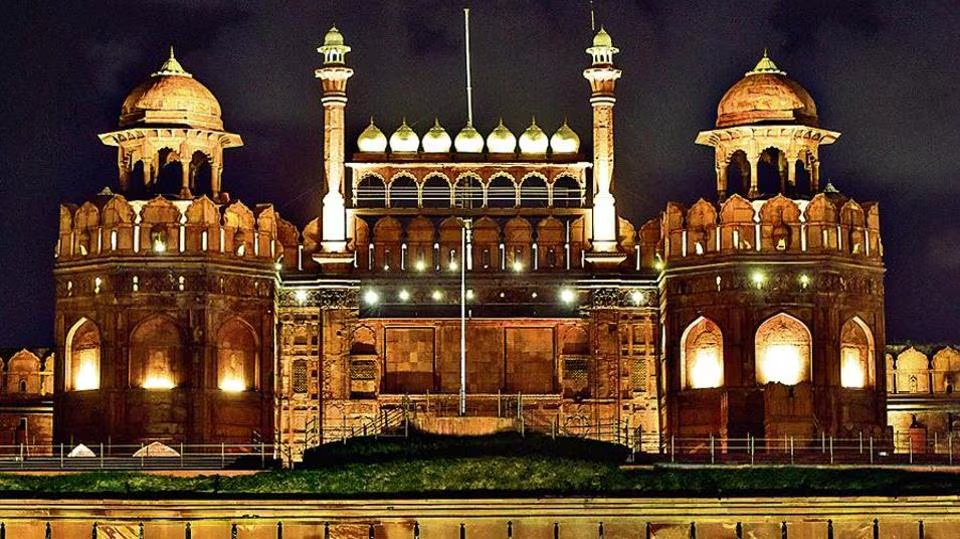Red Fort, Delhi – A Timeless Symbol of India’s Heritage
The Red Fort, locally known as Lal Qila, stands as a grand testimony to India’s rich history, architectural brilliance, and cultural heritage. Situated in the heart of Old Delhi, this iconic structure is one of the most visited and celebrated landmarks in India. Declared a UNESCO World Heritage Site in 2007, the Red Fort continues to captivate the imagination of millions, both for its historical significance and its stunning design.
Historical Background
Commissioned by the Mughal Emperor Shah Jahan in 1638, the Red Fort was constructed when the emperor decided to shift his capital from Agra to Delhi, which he named Shahjahanabad. The fort served as the main residence of the Mughal emperors for nearly 200 years, until the British colonial era began in 1857. Designed by the architect Ustad Ahmad Lahauri, who also designed the Taj Mahal, the Red Fort took nearly a decade to complete and was finished in 1648.
Originally called Qila-i-Mubarak, meaning ‘Blessed Fort’, the structure symbolized the grandeur and authority of the Mughal Empire. It also witnessed the decline of the empire and the rise of British dominance in India.
Architectural Brilliance
The Red Fort is named for its massive red sandstone walls, which stretch for around 2.4 kilometers and rise up to 33 meters in some areas. The fort combines Persian, Timurid, and Indian architectural styles, showcasing the synthesis of cultures that defined the Mughal aesthetic.
Inside the fort, a series of impressive buildings and structures await visitors. These include:
- Lahori Gate: The main entrance, used by emperors and now by dignitaries, including the Prime Minister during Independence Day celebrations.
- Delhi Gate: Another majestic entrance used historically for ceremonial purposes.
- Diwan-i-Aam (Hall of Public Audience): A grand pavilion where the emperor addressed the general public and resolved their issues.
- Diwan-i-Khas (Hall of Private Audience): An ornate hall with marble interiors where the emperor met with courtiers and dignitaries. The famous Peacock Throne once stood here.
- Rang Mahal: A palace for the women of the royal household, adorned with intricate floral designs and a stream of running water.
- Moti Masjid (Pearl Mosque): A small private mosque built by Aurangzeb, reflecting Mughal religious architecture.
The fort complex also includes beautiful gardens, fountains, and pavilions that once echoed with royal music, poetry, and the laughter of courtiers.
Cultural and Political Significance
The Red Fort is not only a marvel of Mughal architecture but also a symbol of India’s freedom struggle. On 15th August 1947, when India gained independence from British rule, Prime Minister Jawaharlal Nehru hoisted the Indian national flag from the fort’s Lahori Gate and delivered his famous “Tryst with Destiny” speech. Since then, every year on Independence Day, the Prime Minister hoists the flag and addresses the nation from the same spot, making it a site of immense national pride.
During the British era, many of the original decorations and treasures of the fort were plundered or destroyed. However, restoration efforts have preserved its legacy, and today the fort houses several museums showcasing the rich history of India and the Mughal period.
Visiting the Red Fort
Today, the Red Fort is a major tourist attraction in Delhi. It is open to the public every day except Mondays. Visitors can explore the sprawling complex, admire its architecture, and gain insight into India’s glorious past. The fort also hosts a sound and light show in the evening, narrating the history of Delhi and the fort in a captivating audio-visual format.
The fort is especially lively during national festivals and cultural events. On Independence Day, it becomes the focal point of national celebrations, attracting thousands of visitors and dignitaries.
